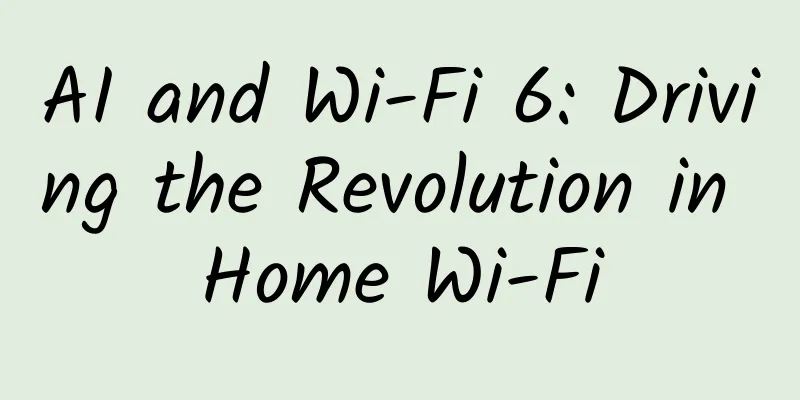Application of 5G IoT in Commercial Buildings

|
The long-awaited 5G technology is finally here. It is expected to account for more than 40% of global smartphone sales by 2021, growing to 69% by 2025. But in a business context, the benefits to consumers pale in comparison to the promise of 5G. With it, 5G will also bring changes to our buildings. The architectural advantages brought by smart technology have long been recognized, but a decade ago, the idea of retrofitting existing buildings with smart building technology seemed daunting. In addition to being too costly, the sensors required for building intelligence lack at least four key technologies: battery life, computing power, connection options and bandwidth, which prevented most organizations from widespread adoption. Around the middle of the last decade, the movement to retrofit older buildings began to gain momentum as more IoT devices designed specifically for buildings became available. Many of the factors that hindered facility retrofits were also removed, including the unlimited computing power and storage space in the cloud. This greatly improved battery efficiency and life, as well as a variety of connectivity options including Wi-Fi, cellular, ZigBee, and Bluetooth. As we move into the 5G era, it’s important to understand the differences between this generation of wireless connectivity and how it will change the way buildings operate. Limitations of 4G LTECellular networks are one of the most common and flexible types of device connectivity. They have long been the first choice when enterprises want to connect their IoT devices to the cloud but don’t want to use cables or Wi-Fi to put these devices into the corporate network. Until recently, 4G LTE was the top mobile communication standard in the world and the best choice for connecting IoT devices to the cloud using cellular protocols. However, even though 4G is far superior to 3G in terms of speed, it still imposes practical limits on the amount of data that can be transmitted and the number of individual devices that can be connected. In many situations, 4G LTE networks can be overwhelmed when tracking the real-time movement of hundreds of occupants through a facility, location and performance reporting of thousands of pieces of equipment, and real-time interaction and control of building systems by mobile devices. If you’ve ever been to a large conference, sporting event, or concert, you’ve likely experienced the frustrating limits on the number of smartphones that can successfully connect to a 4G network. Now, with the development of a distributed hybrid workforce, 75% believe that reliable broadband connectivity must be significantly improved to fully support hybrid work. 5G bandwidth makes the Internet of Things possible5G is expected to solve broadband access and coverage issues by significantly increasing the number of connected devices in buildings, and may revolutionize and accelerate the market for smart building technology in the post-pandemic workplace. Unlike 4G, 5G is a unified platform designed to support 100 times more traffic and 10 times lower end-to-end latency, making massive IoT such as mobile phones and building systems nearly ubiquitous and enabling fully connected smart buildings. And, because 5G natively supports all spectrum types and bands, and can optimize which spectrum to use in real time, it also offers a wide range of deployment models (from traditional macro cells to hotspots), as well as new ways to interconnect (such as device-to-device and multi-hop mesh). This means that as more organizations reassess their real estate needs and look for smart ways to adopt hybrid work models that match how their workplaces are actually used. 5G can enable a wider deployment of sensors that register and share data almost instantly at any node on the network - whether it's connected to an office's HVAC system, an employee badge, or a home office desk that a company has purchased for remote employees. Application of 5G IoT in Commercial BuildingsAfter more than 20 years of using cloud and desktop technologies, especially those created for the construction industry, we know all too well that migrating to a new software platform can be a significant undertaking, but the end result outweighs the initial effort. However, taking advantage of all the benefits 5G has to offer still requires careful planning and an understanding of availability. Availability applies not only to the location of existing facilities, but also to whether the various technology solutions that may be used in facilities in the future are actually 5G-enabled. 5G is rapidly rolling out to most major metropolitan areas in the United States, but rural areas and geographically dispersed organizations, including in other countries, will likely face standardization challenges in the short term. Many of the PropTech solutions currently installed are likely to be optimised to transmit only small amounts of data at slower intervals than 5G can support. This may mean that some of these solutions are unable to achieve the increased performance from 5G networks due to technical limitations of the existing hardware itself. Therefore, in many cases, existing infrastructure such as routers that currently only support 4G will also need to be replaced. Migrating to 5G will also require careful planning and collaboration between the facility’s organisation, both at the corporate level and within the local facility’s IT department. First, collaboration often starts with convincing the IT team that the end result will be in their favor, such as explaining how moving IoT devices from wired and wireless networks to cellular networks will reduce traffic on internal infrastructure. Increased bandwidth will also reduce downtime for users of these devices and may also reduce the use of IT support resources. As part of your transition plan, it is recommended that you also use this time to review your own Voice over Internet Protocol (VoIP), data management, and security policies. More importantly, work with local operators to understand their specific 5G tower migration plans to ensure that the expected migration time is within maximum uptime. The smart building market has grown rapidly over the past few years as the COVID-19 pandemic has accelerated the adoption of new technologies, such as sensors for detecting workplace utilization and occupancy, indoor air quality (IAQ), and building equipment monitoring. Now, between the added pressure on landlords and owners to meet new sustainability requirements, and organizations adopting new working models during the Great Resignation, measuring building performance and quality, and accurate data will be key to understanding: when and where is working well, and what needs improvement. To achieve this goal, we hope to see more organizations adopt all the capabilities supported by 5G networks. 5G is the ultimate catalyst for the realization of smart buildings. |
<<: PTC DPM: Dramatically improving manufacturing efficiency again
Recommend
To accelerate the layout of ICT, Fenghuo released the new server FitServer V5, which will show you what "more than powerful" means!
[51CTO.com original article] On July 21, 2017, Fe...
My HTTP/1.1 is so slow! What can I do?
[[383004]] This article is reprinted from the WeC...
Tencent: Fully opening up 5G capabilities to build a "new connection" in the digital era
As an important part of the new infrastructure, 5...
RAKsmart Double 11 Spend $10 and get $10, VPS 30% off from $0.99/month, cloud server 15% off
RAKsmart launched the Double 11 Carnival pre-sale...
How fiber optics helps businesses and people in the digital age
How fiber optics helps businesses and people in t...
Two years after the license was issued, what progress has been made in my country’s 5G development?
Since the Ministry of Industry and Information Te...
DesiVPS: $15/year-1GB/15G NVMe/1.5TB@10Gbps/San Jose data center
DesiVPS continues the Black Friday promotion in D...
Don't let hackers sneak into your network: In-depth analysis of DHCP Snooping
1. Overview of DHCP Working Principle Before lear...
The champion of Huawei Elite Competition is about to be announced. Who will win the highest title of Huawei ICT Talent?
In a few days, the finals of the two exciting eve...
5G and its impact on the Internet of Things
Not surprisingly, the digital world is gradually ...
Huawei launches LampSite X indoor digital innovation solution to unleash the unlimited potential of the digital world
[Dubai , UAE , October 11, 2023 ] During the 2023...
Interpretation of the 2017 Global Data Breach Cost Research Report
In early July, the 2017 Global Cost of Data Breac...
Ten pictures and five questions to help you thoroughly understand Kafka architecture tuning
1 Do you know how Kafka's ultra-high concurre...
Pairing private networks with 5G to boost smart city development
Consider the superior performance that 5G offers ...
5G will catalyze the era of large-scale innovation in the whole society
Intuitively, 5G has a very obvious role in drivin...









